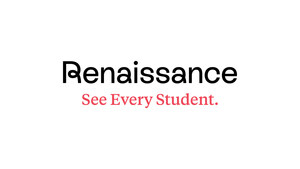Key data insights include the impact of 15-plus minutes of daily reading over time, strength of book series and graphic novels to spark and sustain reading interest
BLOOMINGTON, Minn., April 9, 2024 /PRNewswire/ -- As schools continue to work to bring reading scores up to pre-pandemic levels, a new report provides a definitive look at what kids are actually reading in grades K–12 and documents the significant difference that reading at least 15 minutes per day—over time—makes on future academic success.
What Kids Are Reading is compiled annually by Renaissance, a global leader in pre-K–12 education technology and one of the nation's leading providers of reading practice programs used by nearly 5.4 million students in nearly 22,000 schools across the US. The report documents the more than 179 million books read by these students during the 2022–2023 school year by grade and reading level.
Data is drawn from two Renaissance sources: Accelerated Reader, which tracks what students are reading; and myON, which provides access to a massive digital library. Together, these programs personalize reading practice for students by guiding them to engaging books and sharing actionable reading data with educators.
"No other study captures student reading behavior on this scale," said Dr. Gene Kerns, Chief Academic Officer at Renaissance. "Our report is packed with insight into the books we know kids are truly reading, from beginning to end, as well as additional titles to inspire reluctant readers at every grade level."
Insight: Reading 15-plus minutes a day unlocks student potential
Renaissance data shows that students who engage in reading for at least 15 minutes per day across K–2 were exposed to nearly five times more words—over 275,000—than kids who read for less time. This number continues to grow exponentially over time, with high school seniors exposed to 6.8 million words versus 1.5 million by graduation.
"As kids develop lifetime habits, reading for at least 15 minutes per day is one of the best habits they can have," said Kerns. "Not only are they exposed to more words, their understanding of themselves and the world expands as their ability to read more sophisticated material grows."
The report says that by adopting the 15-minute-per-day average reading habit, all children show improvement, but particularly those who are behind. Sadly, data shows that just 49% of K–2 students are reading 15 minutes per day; in all grades combined, just over half (51%) of students are doing so.
"Overall, kids are reading less and less," said Kerns. "And that's why we feel so strongly that this report can help anyone who wants to engage a child in the joy of reading." Educators and others can use the report's companion webpage to customize booklists for individual students or groups filtered by state, grade, reading level, and more.
Insight: Series and graphic novels help to build student interest, skills
Another interesting finding in this year's report is that students who engage with book series—including popular graphic novel series such as Cat Kid Comic Club by Dav Pilkey—tend to read more, gaining reading and vocabulary skills.
"Parents may be concerned that graphic novels are not building the necessary reading and comprehension skills that their children need, but our research shows that these titles are on par in terms of text complexity, as measured by ATOS, with others across the various grade levels," said Kerns. "Book series are also providing students with some of our strongest reading growth because they are drawn in for multiple reads."
Key data points from the report follow, by grade band:
- In grades K–2, only 49% of kids are reading 15-plus minutes per day.
- In grades 3–5, 29% of at-risk readers who read 15-plus minutes per day are likely to reach benchmarks by spring, versus 19% without the daily reading habit.
- In grades 6–8, using Student Growth Percentiles (SGPs), kids who read 15-plus minutes per day and score 85% on reading comprehension quizzes attained an SGP of 52 on Renaissance's Star Reading assessment, indicating above-typical growth.
- In grades 9–12, kids are reading both the classics and contemporary literature. The data shows that teens' book choices parallel adults' picks, with ATOS levels of high school reading at 4.9 versus The New York Times Best Seller list at an ATOS of 5.2.
What Kids Are Reading also includes AI-informed summaries identifying common themes across the most popular books, as well as the top Spanish-language books by grade level. The report is available for download at renaissance.com/resources/what-kids-are-reading.
"It's our hope that this year's report will inspire and inform educators, librarians, and families about the challenges and opportunities to engage kids in the lifelong and important skill of reading—not to mention the education and enjoyment they can gain from this important activity," said Kerns.
About Renaissance
As a global leader in education technology operating in more than 100 countries, Renaissance is committed to providing educators with insights and resources to accelerate growth and help all students build a strong foundation for success. We believe that technology can unlock a more effective learning experience, ensure that students get the personalized teaching they need to thrive, and help educators and administrators to truly, fully, See Every Student. Learn more at renaissance.com.
SOURCE Renaissance

WANT YOUR COMPANY'S NEWS FEATURED ON PRNEWSWIRE.COM?
Newsrooms &
Influencers
Digital Media
Outlets
Journalists
Opted In






Share this article